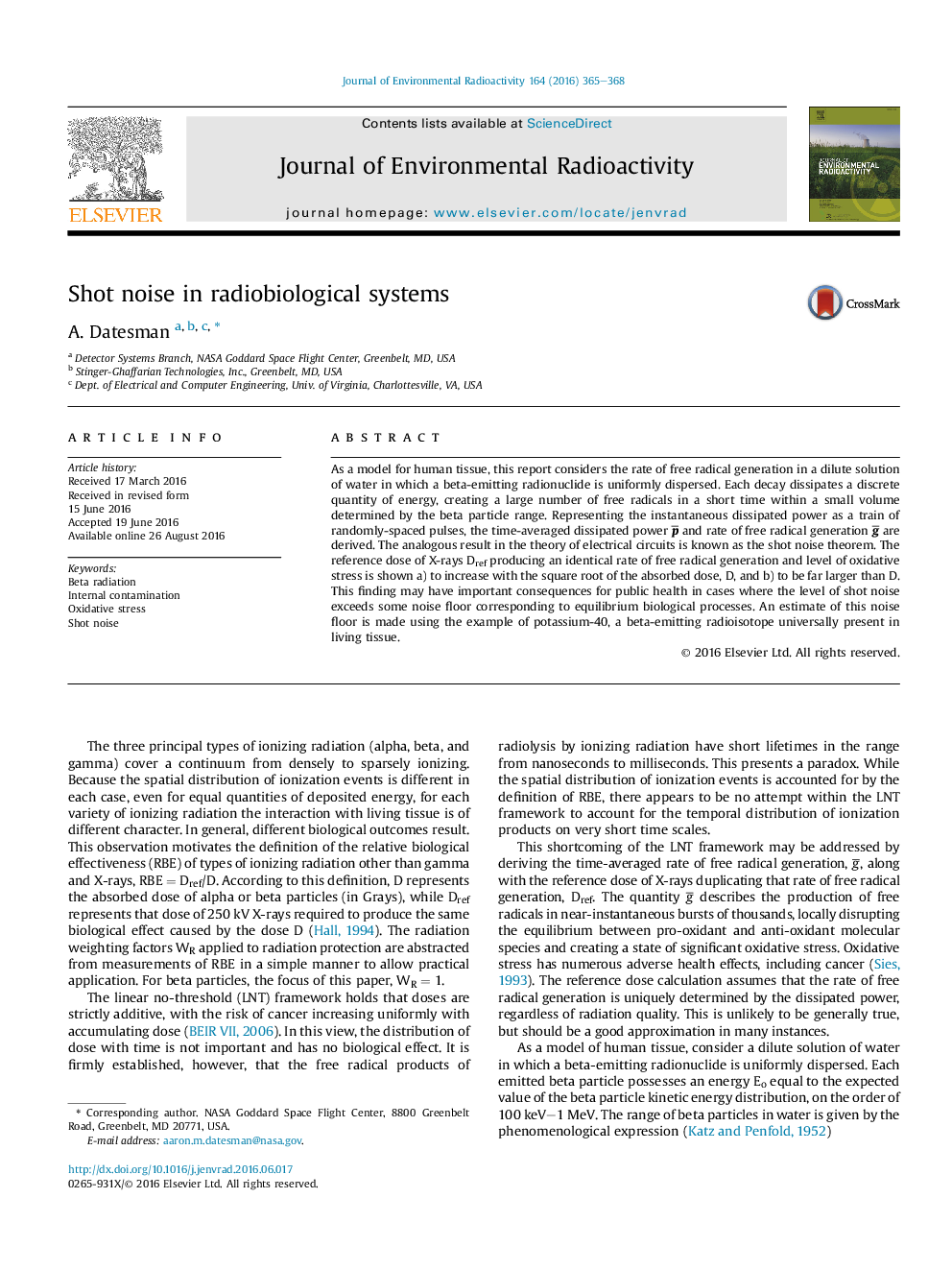| Article ID | Journal | Published Year | Pages | File Type |
|---|---|---|---|---|
| 8081447 | Journal of Environmental Radioactivity | 2016 | 4 Pages |
Abstract
As a model for human tissue, this report considers the rate of free radical generation in a dilute solution of water in which a beta-emitting radionuclide is uniformly dispersed. Each decay dissipates a discrete quantity of energy, creating a large number of free radicals in a short time within a small volume determined by the beta particle range. Representing the instantaneous dissipated power as a train of randomly-spaced pulses, the time-averaged dissipated power p¯ and rate of free radical generation g¯ are derived. The analogous result in the theory of electrical circuits is known as the shot noise theorem. The reference dose of X-rays Dref producing an identical rate of free radical generation and level of oxidative stress is shown a) to increase with the square root of the absorbed dose, D, and b) to be far larger than D. This finding may have important consequences for public health in cases where the level of shot noise exceeds some noise floor corresponding to equilibrium biological processes. An estimate of this noise floor is made using the example of potassium-40, a beta-emitting radioisotope universally present in living tissue.
Related Topics
Physical Sciences and Engineering
Energy
Nuclear Energy and Engineering
Authors
A. Datesman,
